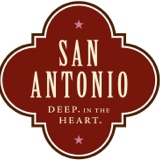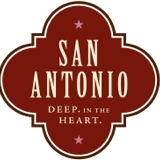Information
-
Document No.
-
45-Day Safe Environments Screener
-
Client / Site
-
Conducted on
-
Prepared by
-
Location
-
Personnel
45-Day Safe Environments Screener
-
1. Head Start classes must be staffed by two paid staff persons, a teacher and an aide or two teachers and, whenever possible, a third person in the classroom such as a volunteer. A maximum staff-to-child ratio of 1:10 with class sizes of fewer than 20 children. <br>[1306.20(c), Safe Environments 2
-
2. For classes serving predominantly four or five year old children, the average class size of that group of classes must be between 17 and 20 children, with no more than 20 children enrolled in any one class. <br><br>For classes serving predominantly three-year old children, the average class size of that group of classes must be between 15 and 17 children, with no more than 17 children in any one class. <br>[1306.32(a)(5)], [1306.32(a)(3)], Safe Environments 2 <br>
-
Room #/Total Enroll/ Class Age/ Total Present/ Maximum Occupancy
-
3. Equipment, toys, materials, and furniture owned or operated by the grantee or delegate agency must be: stored in a “safe and orderly fashion” when not in use. (e.g., in their assigned places, not out where people can trip over them). <br>[1304.53(b)(1)(vii)], Education 14
-
4. Equipment, toys, materials, and furniture owned or operated by the grantee or delegate agency must be: sufficient, safe, durable, age and developmentally appropriate, and kept in good condition (e,g,materials free of sharp edges and loose pieces, balloons and/or plastic bags not used, no choking hazards). <br>[1304.53(b)(1)(iii)(vi), Education 14
-
5. Adequate provisions are made for children with disabilities to ensure their safety, comfort, and participation during outdoor and indoor activities. <br>[1304.53(a)(10)(xvii)]
-
6. All classrooms meet minimum square footage requirements of at least 35 sq. ft. of usable indoor space per child available for the care and use of children (i.e. exclusion of bathrooms, halls, kitchen, staff rooms, and storage places). [1304.53(a)(5)]
-
7. All staff have criminal background checks, initial health exams, and TB screenings. 648A(g)(3)(A-C)], [1304.52(k)(1)]
-
8. All staff are trained in mandated reporter responsibilities, including recognizing suspected child abuse and neglect and following mandated reporting requirements. [1301.31(e)], [1304.52(I)(3)(i)], [1304.52(I)(5)(vi)]
-
9. Children are released only to a parent, legal guardian, or other individual as designated in writing by the parent or legal guardian. The agency maintains lists of these persons, including alternates in case of emergency, and up-to-date child rosters at all times to ensure that no child is left behind in the classroom. [1310.10(g)]
-
10. Staff must supervise the outdoor and indoor play areas in such a way that children's safety can be easily monitored and ensured. [1304.52(g)(2)(5)]
-
11. Does staff notify parents when children are sick or injured. Are there procedures in place for conditions of a short-term injury or contagious illness that can not be readily accommodated. [1304.22 (b)(1)]
-
12. Staff must promote effective dental hygiene among children in conjunction with at least one meal. <br>Toothbrushes should be labeled with the child’s name, and stored in an air-dried position with no part of one toothbrush touching another toothbrush. <br>Children should spit out excess toothpaste after tooth brushing. At least one staff member should supervise proper tooth brushing techniques.<br>Toothbrush may be discarded and replaced when requested by parent due to child illness. It is recommended for toothbrush to be replaced every 3 to 4 months or sooner if the bristles become splayed or worn. <br>[1304.23(b)(3)], Health 12
-
13. Staff, volunteers, and children must wash their hands with soap and running water after diapering or toilet use, before food-related activities, whenever hands are contaminated with blood or other bodily fluids, and after handling pets or other animals. Staff and volunteers must also wash their hands with soap and running water before and after giving medications and before and after treating or bandaging a wound (nonporous gloves should be worn if there is contact with blood or blood-containing body fluids) <br>The City of San Antonio, Bexar County Head Start program does not allow hand sanitizers in the classroom to replace hand washing as described in the regulations. [1304.22(e)(1)(i)(ii)(iii)(iv), 1304.22(e)(2)(i)(ii)], Health 1
-
14. Nonporous (e.g., latex) gloves must be worn by staff when they are in contact with blood or other bodily fluids. <br>[1304.22(e)(3)], Health 1
-
15. Toilets and hand washing facilities are adequate, clean, in good repair, and easily reached by children.<br>[1304.53(a)(10)(xiv)]
-
16. Toileting and diapering areas must be separated from areas used for food preparation and children's activities. <br>[1304.53(a)(10)(xiv)]
-
17. Potties that are utilized in a center-based program must be emptied into the toilet and cleaned and disinfected after each use in a utility sink used for this purpose only, if applicable. <br>[1304.22(e)(6)], Health 11
-
18. Indoor premises are cleaned daily and kept free of undesirable and hazardous materials and conditions. <br>[1304.53(a)(10)(viii)], Education 4
-
19. Garbage and trash are stored in a safe and sanitary manner. [1304.53(a)(10)(xvi)
-
20. Approved, working fire extinguishers are readily available. Are the fire extinguisher inspections current? <br>[1304.53(a)(10)(v)(vi)]
-
21. Functioning and appropriate number of smoke detectors are installed and there is documentation showing that the smoke detectors are tested regularly. [1304.53(a)(10)(v)(vi)]
-
22. Emergency evacuation routes and other safety procedures for emergencies are clearly posted (e.g., fire or weather-related) are practiced regularly. [1304.22(a)(3)]
-
23. Exits are clearly visible and emergency evacuation routes are clearly marked and posted so that the path to safety outside is unmistakable.<br>[1304.53(a)(10)(vii)], Health 3
-
24. Electrical outlets accessible to children prevent shock through the use of child-resistant covers, the installation of child-protection outlets, or the use of safety plugs. <br>[1304.53(a)(10)(xi)]
-
25. Grantee and delegate agencies must provide for the maintenance, repair, safety, and security of all Head Start facilities, materials and equipment. <br>Note: If at the time of the monitoring, a maintenance or repair issue is observed, request documentation from the provider to show what steps are being taken to ensure resolution of the issue.<br>[1304.53(a)(7)]
-
26. Windows and glass doors are constructed, adapted, or adjusted to prevent injury to children. <br>[1304.53(a)(10)(xii)]
-
27. No highly flammable furnishings, decorations, or materials that emit highly toxic fumes when burned are used. <br>[1304.53(a)(10)(ii)]
-
28. Flammable and other dangerous materials and potential poisons are stored in locked cabinets or storage facilities separate from stored medications and food and are accessible only to authorized persons. <br>[1304.53(a)(10)(iii)]
-
29. Service Providers must provide a center-based environment free of toxins such as cigarette smoke, lead, pesticides, herbicides and other pollutants as well as soil and water contaminants. Agencies must ensure that no child is present during the spraying of pesticides or herbicides. Children must not return to the affected area until it is safe. <br>[1304.53 (a)(8)]
-
30. Only sources of water approved by the local or State health authority are used. Only (if Well-Water used)<br>[1304.53(10)(xiii)]
-
32. In climates where such systems are necessary, there is a safe and effective heating and cooling system that is insulated to protect children and staff from potential burns. [1304.53(a)(10)(i)]
-
31. Child care, health, fire, and other applicable licenses and inspection certificates are current. <br>[1304.53 (a)(6)] [1306.30(c)]
-
33. Rooms are well lit and adequate for all classroom activities and provide emergency lighting in the case of power failure. (i.e. working flashlight) <br>[1304.53(a)(10)(iv)]
-
34. Locations and telephone numbers of emergency response systems (e.g. EMS, Fire, Police and Poison Control) are clearly posted. Up-to-date family contact information and authorization for emergency care for each child must be readily available. Staff carries list on field trips and during evacuations.<br>[1304.22(a)(2)], Health 3
-
35. Policies and plans of action for emergencies that require rapid response on the part of the staff (e.g. a child choking) or immediate medical or dental attention are clearly posted. <br>[1304.22(a)(1)] Health 3
-
36. Readily available, well-supplied first aid kits appropriate for the ages served and the program size must be maintained at each facility and available on outings away from the site. Each kit must be accessible to staff members at all times, but must be kept out of the reach of children. First aid kits must be restocked after use, and an inventory must be conducted at regular intervals. <br>[1304.22(f)(1) & 1304.22(f)(2)]
-
37. Each site must have at least one first-aid kit containing the<br>following supplies:<br>(1) A guide to first aid and <br>emergency care;<br>(2) Adhesive tape;<br>(3) Antiseptic solution or wipes;<br>(4) Cotton balls;<br>(5) Multi-size adhesive bandages;<br>(6) Scissors;<br>(7) Sterile gauze pads;<br>(8) Thermometer, preferably non-<br>glass;<br>(9) Tweezers; and<br>(10) Waterproof, disposable <br>gloves.<br>The first aid supplies must not have expired PIG 5
-
38. All medications, including those required for staff and volunteers, are labeled, stored under lock and key, refrigerated if necessary, and kept out of the reach of children. Rescue medications (e.g. Epi-Pens) do not need to be locked up; however, they must be kept out of children’s reach and be immediately accessible to staff at all times. <br>[1304.53(a)(10)(iii)], [1304.22(c)(1)], Health 6
-
39. A trained staff member(s) or school nurse to administer, handle and store child medications must be designated. <br>[1304.22(c)(2)], Health 6
-
40. Physician’s instructions and written parent or guardian authorizations for all medications administered by staff are obtained. <br>[1304.22 (c)(3)], Health 6
-
41. Individual record of all medications dispensed is maintained and reviewed regularly with child’s parent. <br>[1304.22 (c)(4)], Health 6
-
42. Outdoor premises are cleaned daily and kept free of undesirable and hazardous materials and conditions. <br>[1304.53(a)(10)(viii)], Education 4
-
43. The selection, layout, and maintenance of playground equipment and surfaces minimize the possibility of injury to children. (e.g., adequately secured to the ground, free of sharp edges and/or splinters, soft falling surfaces). <br>[1304.53(a)(10)(x)]
-
44. Outdoor play areas at center-based programs must be arranged so as to prevent any child from leaving the premises and getting into unsafe and unsupervised areas. The program ensures that children enroute to play areas are not exposed to vehicular traffic without supervision. <br>[1304.53(a)(9)]
-
-
45. During playground use, is the number of children using the playground less than or equal to the maximum number of children allowed? [1304.53(a)(5)]
-
46. Vehicles are properly equipped (e.g. two way communication system, labeled and charged fire extinguisher, labeled first aid kit, seat belt cutter, reverse beeper, etc.)<br>[1310.10(d)(1,2,3,4)] , [1310.12(a)]
-
47. Vehicles used for child transportation are registered and inspected per local, state, Tribal and federal regulations.<br>[1310.13(a)]
-
48. Children are seated using age and weight appropriate child passenger safety system unless the agency holds a current waiver. <br>[1310.11(a)]
-
49. Bus monitors and drivers have been trained on child boarding and exiting procedures, use of child passenger safety systems, emergency response, evacuation procedures, and child pick-up and release procedures.<br>[1310.17]
-
50. Bus monitors and drivers complete pre-and post trip vehicle checks, including second or third complete interior inspections to ensure no child is ever left on vehicle.<br>[1310.13 (c)]
-
51. Bus drivers posses CDL licenses with passenger endorsement and meet all other health, training, and safety qualifications prior to transporting children. [1310.16(b)(3)], 1310.17(a)(b) (1-7)]
-
52. Bus routes are planned to include only curbside pick up and drop off and no backing up or U-turns. Children escorted as they board and exit vehicles. [1310.20(a)], [1310.20 (5)] [1310.20(3)]
-
Grantee Signature
-
Partner Signature








